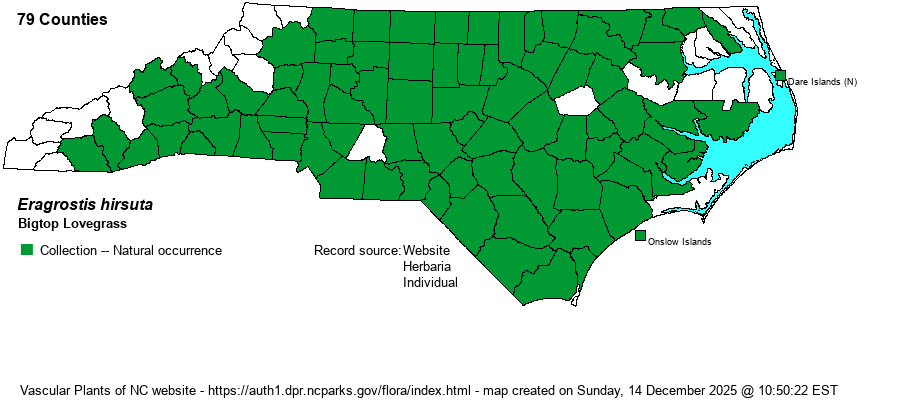| Author | (Michaux) Nees | |
| Distribution | Throughout the state, with gaps in the Mountains and in the far northeastern counties.
MD to MO south to FL and TX. | |
| Abundance | Frequent to common in the Coastal Plain, Sandhills, and Piedmont; infrequent to fairly common in the lower portions of the mountains. | |
| Habitat | Dry to xeric sandy woodland openings, clearcuts, roadsides, powerlines, disturbed soils. Its true natural habitat in NC is unknown. | |
| Phenology | Flowering and fruiting July-October. | |
| Identification | Well-named, Bigtop Lovegrass produces a huge inflorescence that is very open and airy, broadly ovoid, 1-2.5 feet long. The spikelets are only 2-5 mm long and each contains 2-6 florets. In late fall, the whole inflorescence breaks off and rolls about with the wind. | |
| Taxonomic Comments | None
Species in the genus Eragrostis -- the lovegrasses -- often have inflorescences that are larger than the rest of the plant. Such inflorescences are very open and airy, but other species have more contracted inflorescences. Each spikelet is laterally compressed and contains few to many florets, which lack awns. | |
| Other Common Name(s) | None | |
| State Rank | S5 | |
| Global Rank | G5 | |
| State Status | | |
| US Status | | |
| USACE-agcp | FACU link |
| USACE-emp | UPL link |

